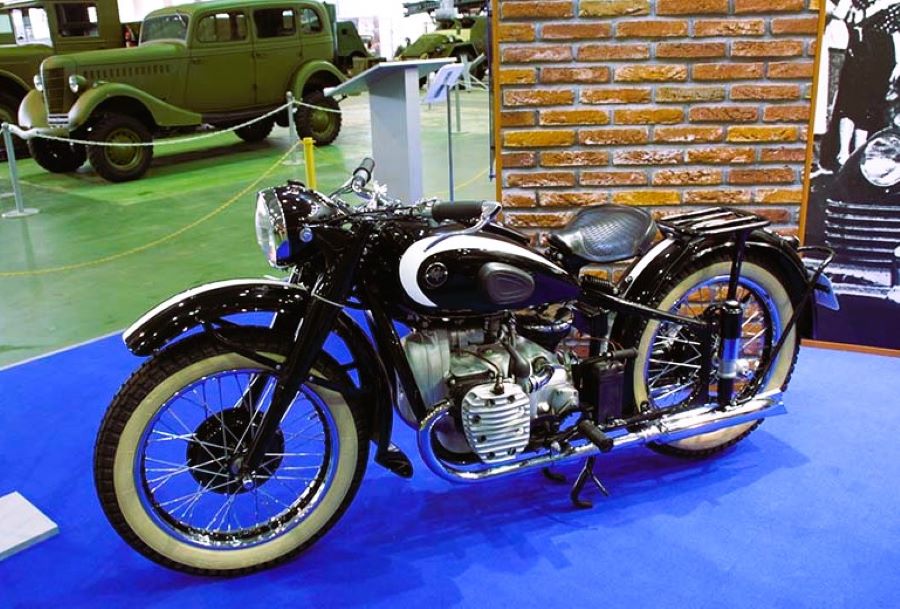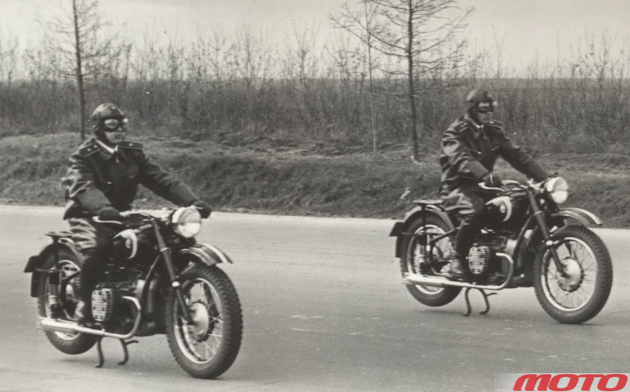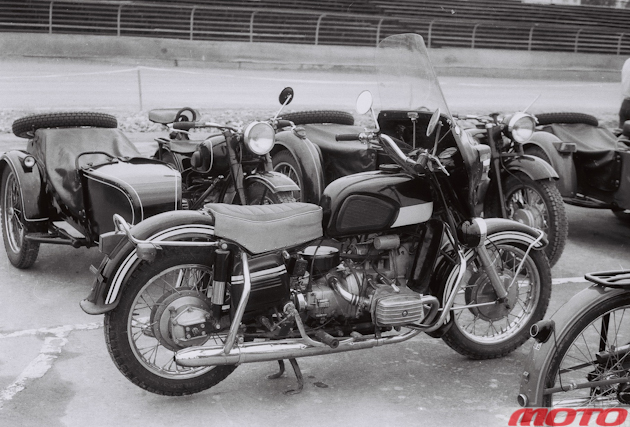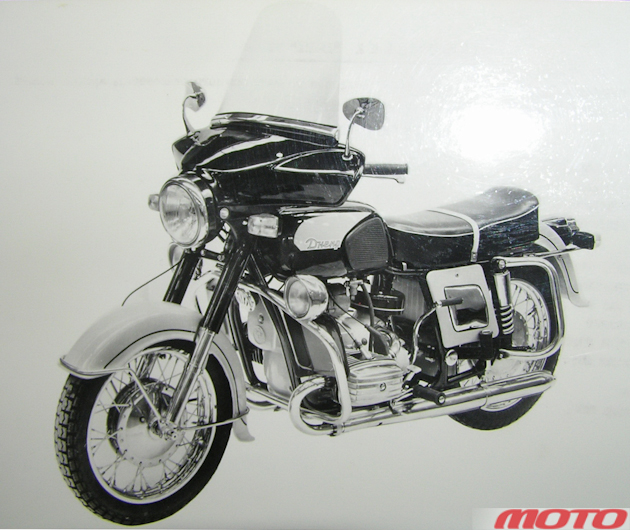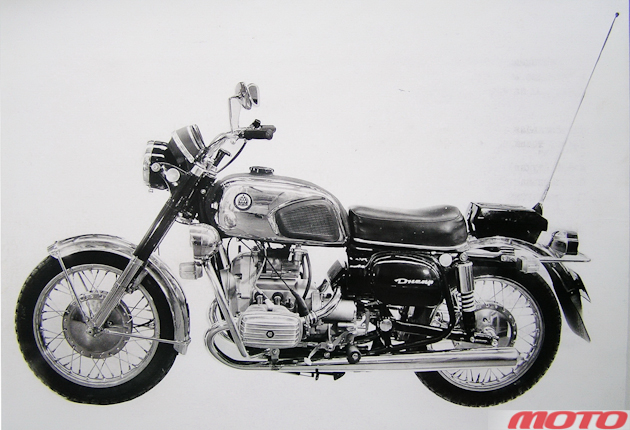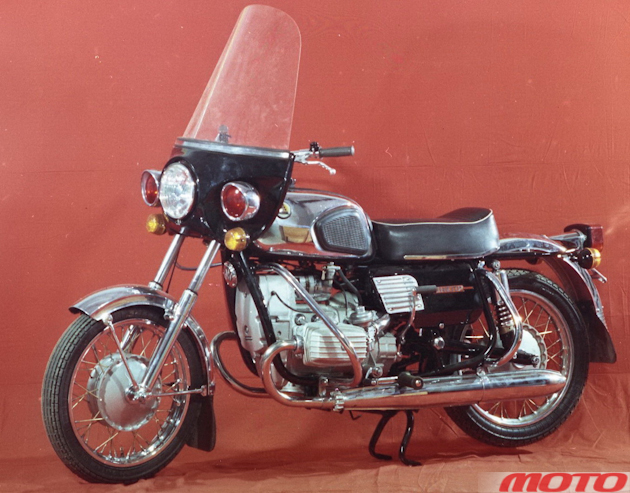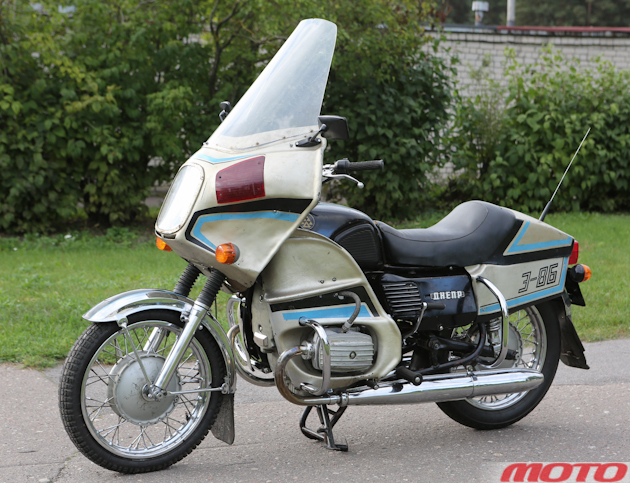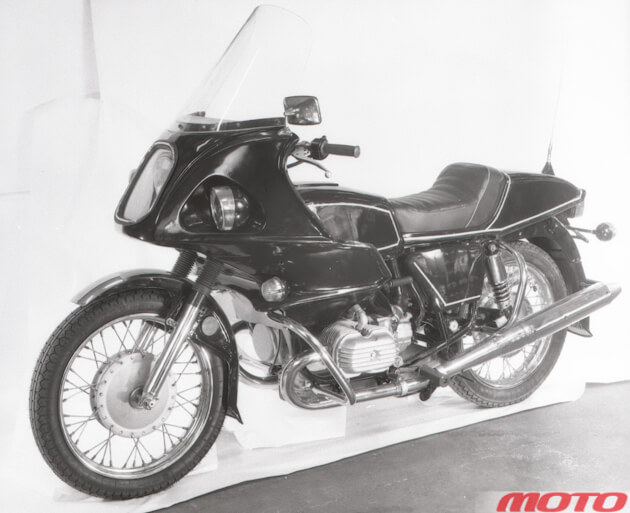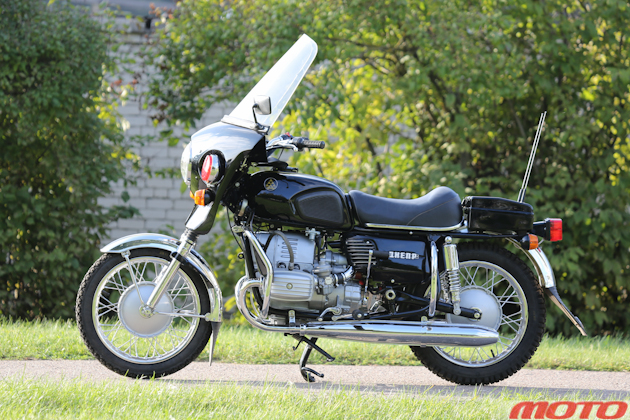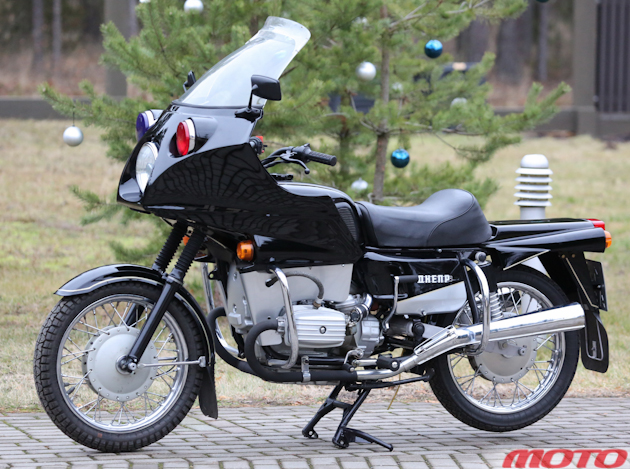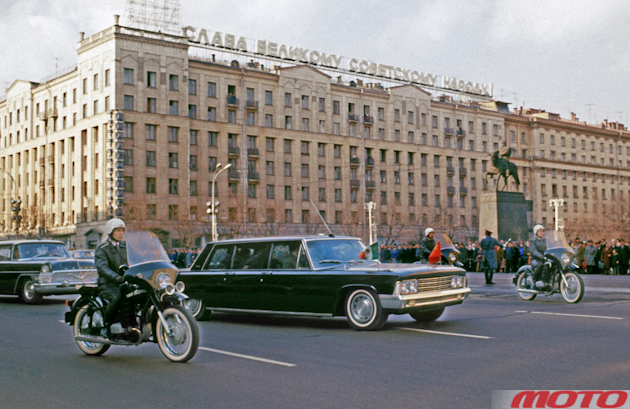Here’s the second installment on Kremlin Eskorts, more photos and additional information.
An honorary escort (who also served as a guard) is a long-standing tradition. Since ancient times, ceremonial departures of tsars and receptions of foreign embassies and dignitaries were accompanied by detachments of archers. In the 20th century, horses were replaced by motorcycles.
The history of the honorary escort of the USSR began in 1955, when the First General Secretary of the Central Committee of the CPSU and leader of the Sovjet Union, Nikita Sergeyevich Khrushchev, instructed the commandant of the Moscow Kremlin A.Y. Vedenin to create a motorcycle platoon for the solemn escort of government guests at the highest level. Shortly before that, Khrushchev had visited Yugoslavia, and he really liked the meeting reception organized there with the participation of motorcycle escorts, so of course, he wanted his own.
The choice fell on the M-72 version produced by the Kiev Motorcycle Plant (KMZ), which became the official supplier of the 9th Directorate of the KGB of the USSR for almost four decades (and not to the Irbit Motorcycle Works in Irbit, Russia, manufacturer of the first M-72’s based on the BMW R71, and later, “Urals”). The first motorcycles, judging by the surviving photographs, belonged to different KMZ factory batches produced in 1955-56, as evidenced, for example, by two types of yokes for fastening the folding part of the rear wing. These machines differed from the usual serial ones primarily in a special black and white color and a large number of chrome parts (including wheel rims, rear suspension shock absorber shrouds and air filter covers). Practically the only “special equipment” was the electric sound signals-pipes on the head motorcycle.
The baptism of fire of the motorcycle platoon of the Separate Special Forces Regiment of the Moscow Kremlin Commandant’s Office (OPSN UKMK), as the motorcycle unit of the honorary escort was officially called, was the visit of the President of Yugoslavia Josip Broz Tito to the USSR in the summer of 1956.
At the end of the 1950s, tires with white-painted sidewalls appeared on escort M-72s. At the same time, shields were installed to cover the driver’s knees. In photographs taken in the winter of 1959, for the first time, you can see windshields of the same type that were later used on the K-750. In winter, escort motorcycles were operated with sidecars. This practice has survived to this day.
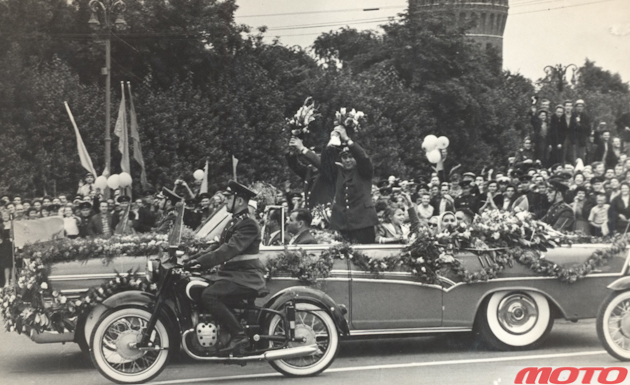
Since 1961, instead of the well-deserved M-72, new improved model K-750 motorcycles began to serve. During the solemn celebrations of the early Soviet cosmonauts, the honorary escorts accompanied their parade in shiny new motorcycles. This model motorcycle K-750 used a modified side-valve engine, boosted to 26 hp. New was the chassis: pendulum rear suspension and short-lever “stubbie” front fork. Structurally, the escort K-750 did not differ much from the production models, the difference was more in the configuration, high quality of workmanship and assembly. They received a softer suspension, a “high-speed” gear pair in the final drive and a folding side stand, were equipped with rear-view mirrors, horns, and a VHF radio station installed on the right side of the rear wheel.
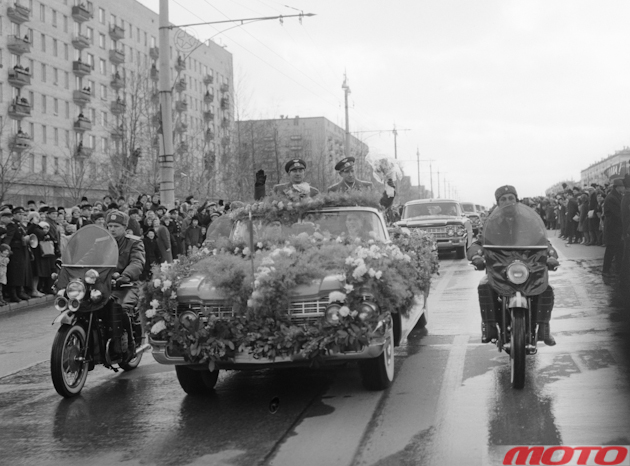
The last production motorcycles in the service of the honorary escort were the K-750M (since 1967) and K-650 (since 1968) models. The first differed from the K-750 in a telescopic fork, unified with the Urals, and wheel hubs with labyrinth seals. And on the new model K-650, almost in the same chassis there was a new MT-8 overhead-valve engine. According to the memoirs of veterans, the K-650 proved to be better than previous motorcycles: it did not have a tendency to overheat, characteristic of side-valve engines. Therefore, the drivers themselves made a replacement, rearranging the MT-750M engine in the chassis of the K-Series MT-8.
A rather problematic unit turned out to be a new automatic ignition advance timing system. Its work was considered unsatisfactory, and the honorary escort until 1979 received motorcycles with manual advance ignition timing.
Motorcycles were equipped with a rigid windshield with built-in flashing lights. Most of the motorcycles were radio-fitted. The black and white color traditional for escort motorcycles was changed slightly: on fuel tanks, the white stripe had become horizontal, tapering towards the rear. According to the memoirs of veterans of the service, at the request of the riders, the girls who worked in the garage of the honorary escort painted the edging of white stripes with golden paint with a thin artistic brush.
Since a number of parameters of serial production mass-produced motorcycles no longer met the requirements of the escort service motorcycles, at the end of the 1960s, in Kiev, the development of special models began. The first in their series was the experimental machine K-650ES (aka “Dnepr-ES”), which entered the tests at the Serpukhov Institute VNII-Motoprom in 1968. Structurally, it was still a modification of the serial K-650, and it can only be considered a special motorcycle with a big stretch. The most notable difference was the 18-inch wheels, which were used on all subsequent escort models from that point on.
Thanks to a new cushion saddle, the rider’s seating became more comfortable. The mudguards, side decorative shields, knee guards, as well as the wind shield were made of fiberglass. The shape of these parts had been carefully selected to provide better protection for the rider from dirt and wind. For the first time, the rear roll bar appeared. The body of the sidecar was also made of fiberglass, its frame was significantly lighter compared to the standard heavy sidecar.
This newest version was given the factory designation “Escort-73”, and from that moment on, the tradition of designating escort motorcycle models according to the year of the planned launch into the series was maintained until the end of production. The device turned out to be very stylish. Due to the large windshield with a protective shield, deep wings, an abundance of chrome parts, it compared very favorably with production motorcycles, therefore, while traveling in a motorcade, it perfectly demonstrated the special status of the event.
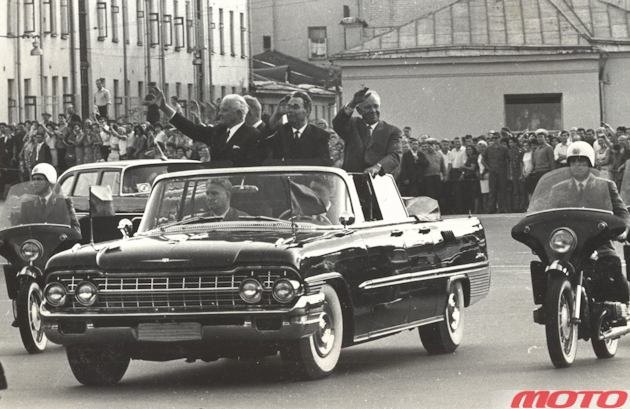
At the same time, the department of the chief designer of KMZ was working on the creation of “civilian” motorcycles, which were either simplified versions of the already mastered escort vehicles, or independent projects, which, in turn, often served as a source of ideas for escort topics. One of the prototypes was the Dnepr-10.6 model. The plant announced it as “a motorcycle intended for export to highly developed countries”. In fact, this model was a two-seater version of the Escort-73 in a new frame. The motorcycle received 12-volt electrical equipment. From the Escort-73, it inherited fiberglass fenders and a set of rear and front roll bars.
Another experimental machine, created in the mid-1970s, was the “Dnepr Special”. It was designed as a solo motorcycle with a long-range view of the American and other markets, but we are more interested in it as an intermediate step towards another prototype – Dnepr 12.9. On the “Dnepr Special”, based on a new frame, the designers used a five-speed gearbox, a “deployed” cardan shaft with an elastic clutch at the main gear, previously tested on the Dnepr-2 version, a new air filter from a VAZ car. The motorcycle received a “Zhiguli” combination of speedometer and tachometer, which was subsequently used on all escort motorcycles. A new front fork design was also tested on this prototype.

The next step was the installation of a new 750cc 50-horsepower engine (factory designation KMZ-8.153.901), created on the basis of the sports 750 SK01, into the chassis of the “Dnepr Special”. This engine was combined with a five-speed gearbox without an automatic clutch release. To meet the customer’s requirements for a confident start of the motorcycle in frosts down to -40 degrees, it was necessary to develop a special battery. The mould for it was made at KMZ, and the batteries themselves, with a capacity of 32 Ah, were made in the experimental laboratory of starter batteries of the Podolsk Battery Plant. The parameters of this battery made it possible to equip the motorcycle with an electric starter, which was placed on the left along the course near the gearbox. The motorcycle received a rodless front fork of a new design with a hydraulic steering damper. The plant also worked on equipping the front wheel of this model (designated “Dnepr-MT12.9”) with a hydraulically operated disc brake.
The technical project “Dnepr-MT12.9” was considered by the Ministry of Automotive Industry on December 11, 1976. The motorcycle received a number of comments, and in the course of their elimination, a new model was developed – “Dnepr-14.9” (KMZ-8.953). So, the electronic ignition system had to be abandoned due to the low reliability of the element base available at that time. The engine breather received a filter element in the front cover of the engine. The electric starter was placed at the top of the gearbox. Domestic carburetors were replaced by German Bing. The lower rear of the frame had an upswept appeanrance.
The first pre-production “Dnepr-14.9” was sent to the Special Purpose Garage in 1978. Based on the test results, the customer made a number of comments, which the plant tried to eliminate. However, some diseases haunted motorcycles of this model until the end of operation. Serious claims were caused by stability and controllability at high speeds. But, despite all the shortcomings, the motorcycle was a success.
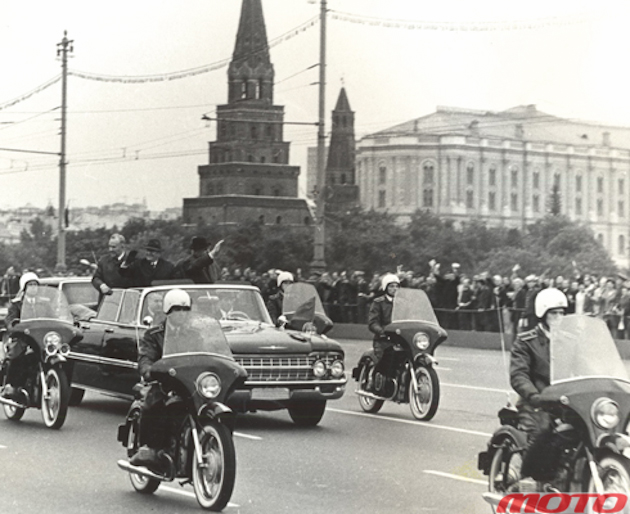
It took more than two years to manufacture the first batch of 25 special escort motorcycles, and they were delivered to the Kremlin only in 1979. The Dnepr-14.9 engine was assembled and brought to Serpukhov VNIIMotoprom.
On December 27, 1980, the Ministry of the Automotive Industry of the USSR approved the terms of reference for a fundamentally new motorcycle for an honorary escort – “Escort-86”. At the request of the customer organization, it was supposed to receive a 950cc engine with a power capacity of at least 64.5 horsepower, a five-speed gearbox with reverse gear, cast wheels, a two-disc front wheel brake, a front fork with aluminum tubes and a number of other modern design solutions at that time. In July 1983, the Kiev Motor Plant manufactured two prototypes for testing. The engine had to be developed virtually from scratch: it received a solid steel crankshaft with Zhiguli main and connecting rod liners, a horizontal crankcase connector, and a chain camshaft drive. However, soon the work came to be suspended: the new motorcycle turned out to be technologically too complex for the existing production at that time.
In the report at the Scientific and Technical Council of the Ministry of Automotive Industry, it was noted: “Fulfillment of the requirements of the terms of reference led to the almost complete unification of the new Escort-86 model in relation to the previously produced Escort-78 model and is:
- for the engine, front brakes, wind shield – 0% – for the rest of the components (front wheel assembly, front fork) – from 21 to 83% – in general for the motorcycle – 21%
One can only wonder at the peculiar logic of the “higher authorities”: the plant followed the requirements of the customer, creating a new motorcycle, and it was the designers who were accused of new developments.
As a result, the Escort-86 project was actually reduced to a deep modernization of the Dnepr-14.9. The first two prototypes were manufactured and submitted for testing only in December 1986. According to the comments of customers, the machines were repeatedly altered, and only in 1988 the Kiev Motor Plant began manufacturing a batch of 25 Dnepr-14.9M motorcycles. They differed from the previous model not only in design, but also in new design. The large-area front fairing was now rigidly fixed to the frame. Initially, this created some difficulties in retraining drivers who were accustomed to “feel the turn” by the position of the front wing. The mufflers were raised, which made it possible to tilt the motorcycle in bends at a greater angle. The electrical system provided for a different switching, the use of original signal lights and a number of new devices placed in a special container with sealed plug connectors, an instrument panel with a clock and an ammeter. For the sake of fashion requirements, the number of chrome parts was reduced. Factory engineers have put a lot of effort into facilitating the entire structure of the motorcycle. The rear swingarm, made of a rectangular tube, has become longer, increasing the base of the machine. The sidecar had also been completely redesigned.
“Dnepr-14.9M” was the last escort motorcycle of the Soviet Union. In 1993, these motorcycles in the “summer” single version were replaced by BMW K75RT motorcycles, while the “winter” version continued to serve until 1996, when it was also replaced by a BMW K75RT with a sidecar.
To complete the picture, it is worth remembering the batch of motorcycles for the escort service of Leningrad. In the mid-1980s, the customer began operating a new batch of machines, and returned the old ones to the factory. When, at the end of the decade, an escort unit appeared in the traffic police of Leningrad, its chief B.N. Gavshin offered to transfer these motorcycles – restored and modernized – to him. This is how the Dnepr-14.9L model (KMZ-8.954) was born, a combination of a serial 650 cc engine with units (five-speed gearbox, electric starter, chassis elements, fairings) of special escort vehicles.
Now a large collection of escort motorcycles restored by the Riga workshop “Moto-Phoenix” (a team of restorers: Alexey Popov, Volodymyr Seko, Andrey Silin, Vitaly Sinevich, Igor Sazonchik, Andrei Verdiyan) is in the FSO Museum and periodically appears at the “Oldtimer Gallery of Ilya Sorokin”.
Page compiled by JD. Final editing/publishing by John.
Sources: b-Cozz archives; MOTO – March 2016 Author: Alexey POTAPOV, as well as from the archive of the author, Special Purpose Garage, Alexander SOROKIN, Andrey MOROZENKO, YouTube, oppozit
copyright b-cozz.com 2023


